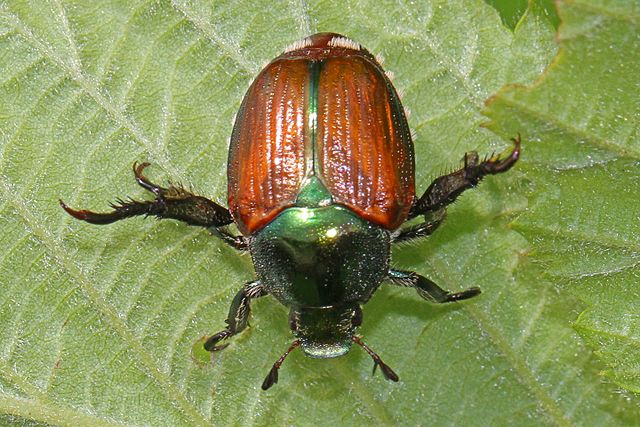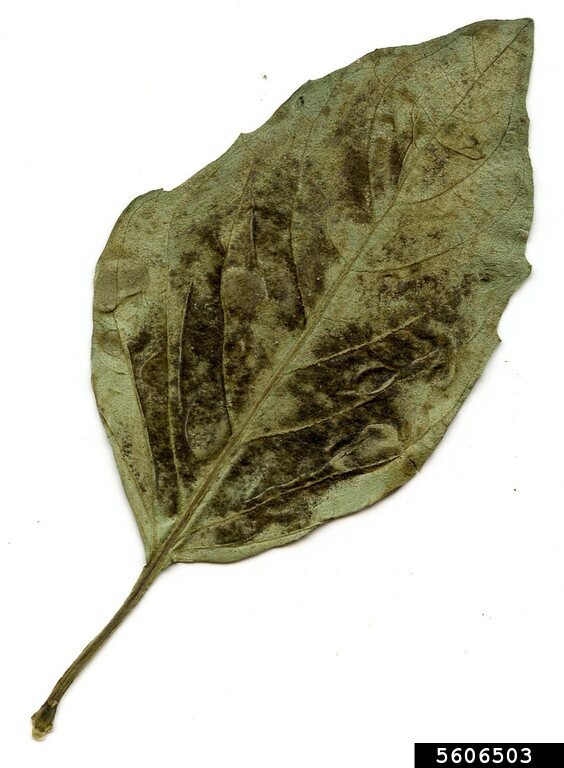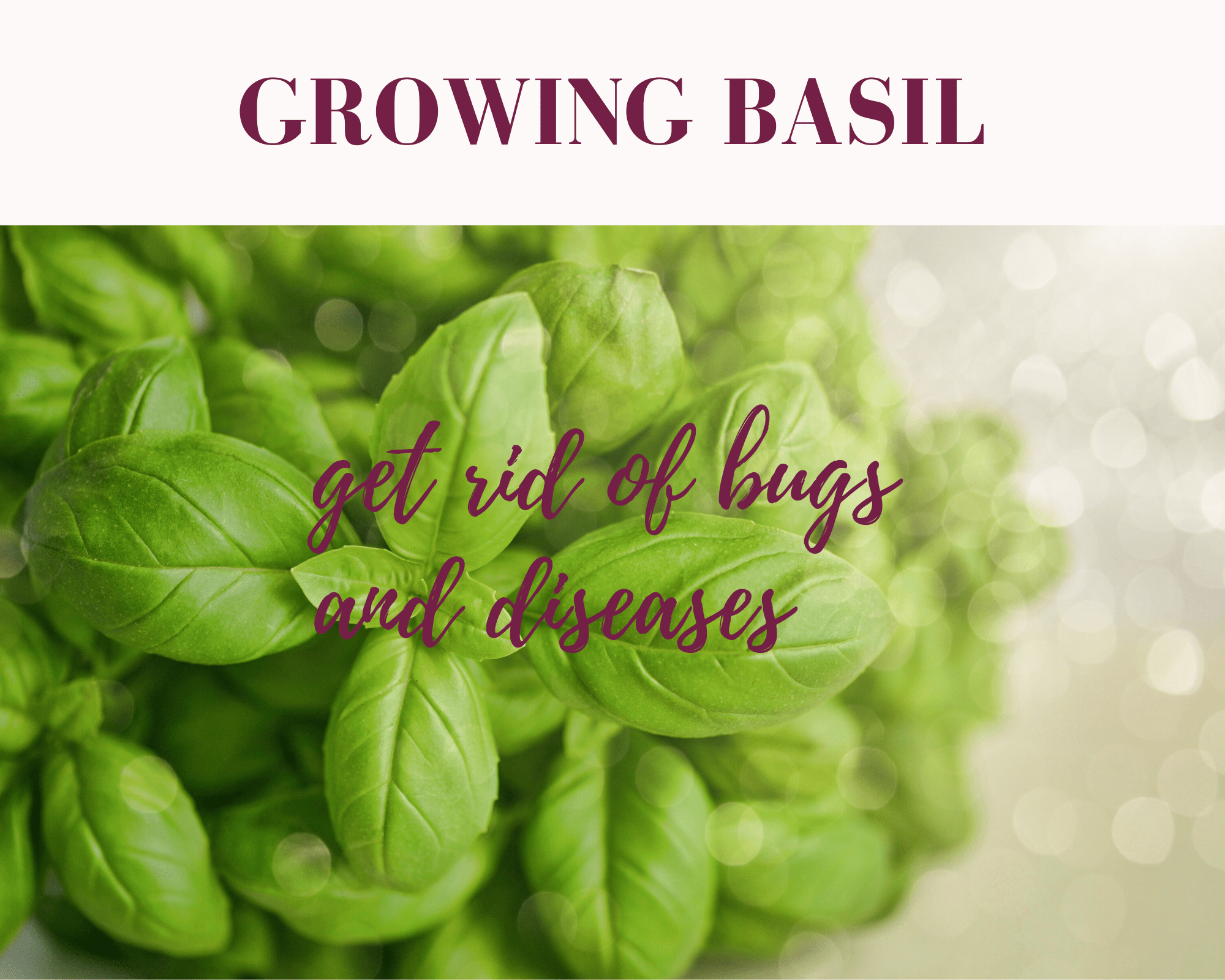This post may contain affiliate links. As an Amazon Associate we earn from qualifying purchases.
People aren’t the only ones who love basil. There are a number of pests and diseases and other basil plant problems to watch out for.
There are warm-weather annuals and then there is basil (Ocimum basilicum), the herb that thrives in hot weather – when temperatures are between 80 and 90 degrees Fahrenheit.
In fact, basil is one of the more frost-sensitive of the commonly-grown herbs. It’s also attractive to several pests and disease pathogens. Some of these can be controlled with various spray products.
See the resources section at the end of the post for our recommendations and visit this page for more information on how to grow and care for basil plants.
Basil Plant Problems: Pests
When the weather warms up the aphids (Aphis spp.) march in, sucking the juices from basil plants. You may also find whiteflies — tiny winged bugs from several genera in the Aleyrodidae family — sucking the juices from the undersides of basil leaves.
Another sucking pest that feeds on basil is the leafhopper, a catch-all name for any member of the Cicadellidae family. Gardeners in the eastern part of the United States may be troubled by the metallic-looking Japanese beetle (Popillia japonica) that chews holes in the basil plant’s leaves.
Basil Plant Diseases
The basil plant is affected by several diseases, both bacterial and fungal. Unfortunately, there is no cure for a bacterial (Pseudomonas cichorii) leaf spot that the plant is prone to.
Downy mildew (Peronospora belbahrii), a common fungal infection, is treatable with fungicides. We like Arber because it’s organic (a biofungicide).
Control Sucking Insects
Before using an insecticide – synthetic or organic – try spraying the pests off the basil with a strong blast of water from the hose. This typically works well with aphid and whitefly infestations.
Aphids, whiteflies and leafhoppers can also be controlled with a variety of different methods. Release ladybugs into the garden and watch them devour aphids. Find out where to buy ladybugs in the Resources section at the end of this post.
A commercial insecticidal soap spray may do the trick but to avoid burning the plant, apply according to the instructions on the label. Please avoid using any of the various DIY sprays you’ll find on various hobbyist gardening sites – especially those who confuse dishwashing liquid with soap. If you plan on eating your basil crop, don’t take chances with the chemicals a lot of these recipes contain (Dawn dish liquid, for instance).
Pyrethrin spray (made from chrysanthemum flowers) will kill all three pests. The problem with this spray is that it will also kill beneficial insects, such as bees and ladybugs. Spray late in the day to avoid this. And, always, always follow the label’s application instructions and cautions.
A rule of thumb in to dilute 3 tablespoons on pyrethrin in 1 gallon of water and spray all surfaces of the basil plant with the solution. The spray can be used up to the day of harvest.

Get Rid of Chewing Insects
Japanese beetles are challenging pests to manage. In the grub stage they chew on the plant’s roots. Then, the adults produce a pheromone that summons other beetles for miles around. They can devour an entire basil garden in one day.
Milky Spore powder is recommended to kill the grubs and Azadirachtin spray will manage the adults. This pesticide is OMRI listed as organic.

How to Deal with Basil Plant Fungal Infections
Downey mildew is a common basil problem. Symptoms first show as yellow leaves, starting from the middle of the leaf surface and spreading to cover the entire leaf.
Then come the spores, which is how the mildew reproduces. You’ll find them on the back of the leaves (see the photo at the beginning of this section.)
Downey mildew infections, which typically occur when humidity levels are high and temperatures are cool, require the use of a broad-spectrum bactericide/fungicide.
Read label instructions carefully before applying the product to basil. As a general rule, use 1.25 ounces of the product per gallon of water and spray the plants until they drip.
Find photos of the symptoms of basil plant problems online at Cornell University’s Plant Disease Diagnostic Clinic.
Basil trivia
Try these out on your fellow basil growers.
In the more than 5,000 years that basil has been grown by humans, it has had various functions. For instance, in India it was thought to possess supernatural powers. In ancient Egypt, it was used for embalming (Washington College).
Therapeutic uses of basil leaf extracts “… appear quite diverse,” according to research published in 2022 (National Library of Medicine). A few of these were mentioned in the research paper:
- Respiratory tract inflammation “(sore throat, laryngitis, bronchitis)”
- Headache
- Intestinal bowel disease (IBD)
- Kidney problems
- Anti-fever agent
- Anti-cancer agent
Resources
As an Amazon Associate I earn a small commission from qualifying purchases.
Basil Plants
Live Ladybugs
Insecticidal Soap Spray
Pyrethrin
Milky Spore Powder
Fungicide



